By Sarah Evans
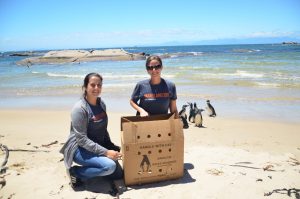
On the morning of November 13, 2017, Jen Kottyan was not at the Zoo in her usual role as Avian Collection and Conservation Manager, overseeing the care of more than 200 birds representing 50 different species. Instead, she was on the other side of the Atlantic Ocean, dressed in oilskins and rubber boots, avoiding the aggression of one particular young, wild bird.
About the size of a football and not much heavier, this bird – an African penguin — was asserting himself as the undisputed alpha bird of Pen Two. Kottyan was trying to tend to him and dozens of other juvenile African penguins in the pen, but he wasn’t making it easy. “No matter what we were doing, he would come barreling out at us, biting our hands,” recalls Kottyan, “and he would go for the [unprotected] folds of skin. You would feed him first because you knew you had to feed him first, otherwise he would beat you up a little bit.”
Partnering to Save African Penguins
Kottyan met this penguin and dozens more while volunteering last fall at SANCCOB, an internationally renowned seabird rescue and rehabilitation facility headquartered in Cape Town, South Africa. She and Maryland Zookeeper Maria Luongo traveled there as emissaries of the Zoo to participate in a two-week keeper exchange program benefiting SANCCOB’s Chick Bolstering Project. Suchan exchange between the Zoo and SANCCOB is a natural fit,given their long history of mutual support, collaboration, and dedication to endangered African penguins.
Since its founding in 1968, SANCCOB arguably has done more than any other entity in the world to reverse the decline of wild African penguins. Meanwhile, in about the same span of time, The Maryland Zoo has established one of the most successful African penguin breeding programs in the world and developed protocols to guide the management and care of the largest colony of African penguins in North America. The two institutions are long-time conservation partners.
Bolstering Chicks in South Africa
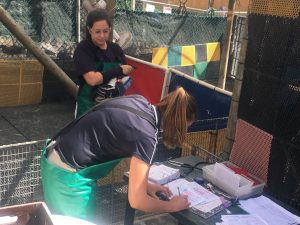
In Kottyan’s expert opinion, feistiness will serve the alpha bird of Pen Two well. “He’ll probably make it out in the wild,” she notes. The Chick Bolstering Project guarantees that many others will as well. Each year during “chick season,” which runs from about October through January, SANCCOB takes in hundreds of abandoned African penguin chicks and eggs. Park rangers monitoring colonies along the South African coast identify those in need of rescue. Most have been abandoned by parents who have gone into abnormally early molt and cannot hunt fish or feed themselves or their young during this time. While vigilant park rangers intercede before the onset of major health issues, the abandoned chicks still arrive at SANCCOB in weakened condition, and it takes many hands to nurse them back to health and return them to their colonies.
For such an influential organization, though, SANCCOB is surprisingly lean. It employs only eight full-time staff members who work out of tight and modest quarters. The main building is functional but not fancy, with cinder block walls, a concrete slab floor, and a multi-purpose feel to every room. It contains, among other things, a nursery and an intensive care unit for very young, injured, or ill birds. Outdoors, birds in various stages of recovery are housed in separate areas. Pen One is for gulls, cormorants, and other flighted birds. Pen Two is for African penguin chicks gaining size and strength. Pen Three is for adult penguins and older juveniles known as “blues” that are preparing for release.
Daily operations at SANCCOB are smooth and efficient, guided by process and protocol, but they rely heavily on volunteer service. This is especially true during chick season, when zoo keepers from around the world fly in to participate in the Keeper Exchange Program. Kottyan and Luongo arrived with years of penguin experience between them and a shared desire to contribute to one of the most successful wildlife conservation initiatives on the planet.
Since its inception in 2006, the Chick Bolstering Project has released nearly 4,000 African penguin chicks back into the wild. Between 2006 and 2012, the Project had a success rate of 77%, admitting 2,535 chicks and successfully rehabilitating and releasing 1,962.. Research has shown that the released chicks fare just as well in the wild as their naturally born counterparts. Each chick that makes it to adulthood is precious to a population that is precariously low and in fast decline.
“Now You’re Good to Go!”
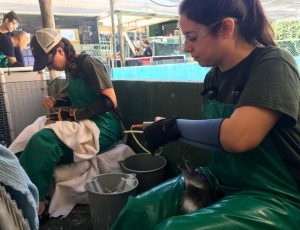
While in South Africa, Kottyan and Luongo began each work day at 8 a.m. sharp with a morning meeting. They would receive their assignments, suit up in personal protective gear, check out necessary supplies and equipment from “General” – the hub of the SANCCOB operation – and get to work. They performed a wide variety of tasks but none more important than tube-feeding chicks. “It’s a quick and easy way to feed birdsthat allows them to gain a lot of weight fast,” explains Luongo. “You can deposit food directly into their stomachs in about 5 seconds and it’s quick and painless for the birds.” Over the course of two weeks, Kottyan and Luongo went from never tube-feeding a bird before to tube-feeding a total of 300 to 400 birds each.
It’s all-hands-on-deck at SANCCOB and there is much to learn, but Kottyan and Luongo managed every assignment like the pros that they are. In addition to tube-feeding, they fed out hundreds of pounds of fish, mastered the complicated logistics of “nebulizing” chicks (which entails grouping them properly and giving medication by mist), oversaw swim time for dozens of chicks that really didn’t want to swim, and helped out in countless other ways. Their visit culminated in the release of nine juvenile penguins on Boulders Beach. Park rangers escorted the team down to the beach where Kottyan and Luongo helped tip the penguins out of their carriers. “These birds started as chicks at SANCCOB, and some even from eggs,” says Luongo, “so they weren’t sure where they were. They were really unsure what to do. But finally they all went into the water and swam out to sea, and it was really awesome to witness.”
Working Toward Shared Goals
On their last day at SANCCOB, Kottyan and Luongo spoke to staff and other volunteers about the Zoo’s African penguin program and how zoos in general impact wildlife conservation. They underscored shared goals and described the high level of coordination within the AZA as well as the careful management that goes into maintaining genetically healthy populations of African penguins and other animals. “Our audience asked a lot of questions and was very impressed,” says Kottyan. “I think they walked away with a better understanding and appreciation for the zoos that are coming there and working with them.”

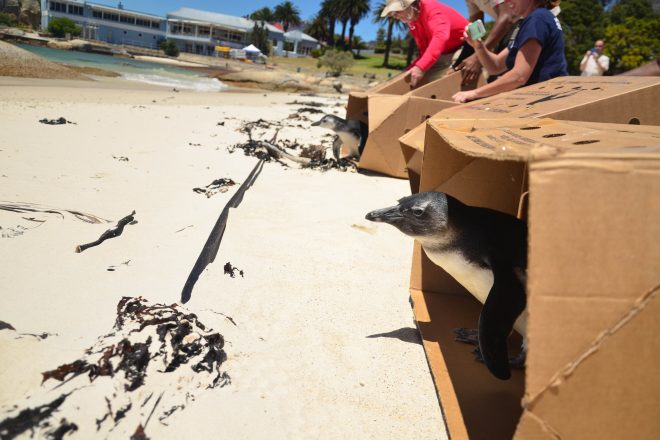
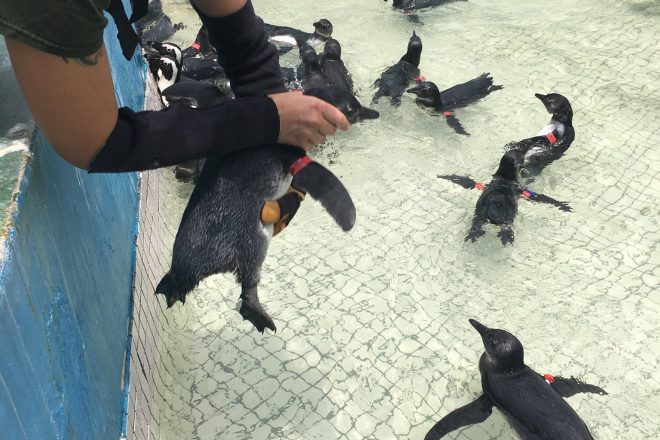
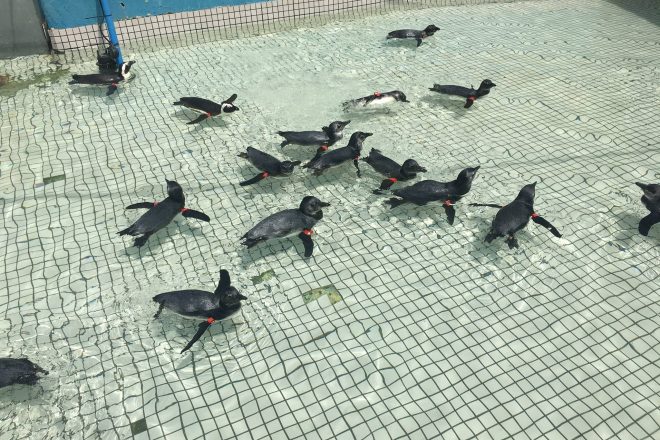
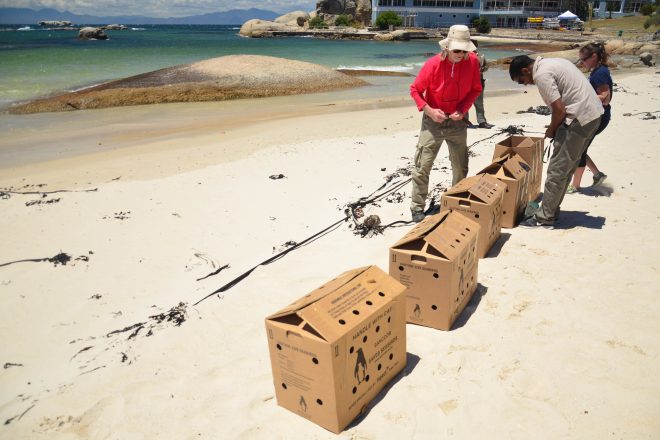
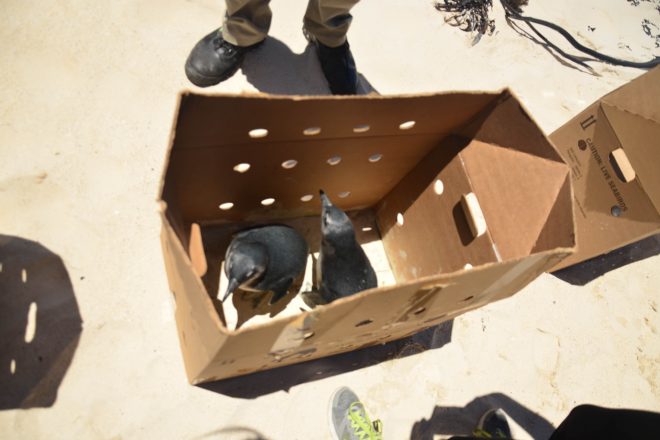

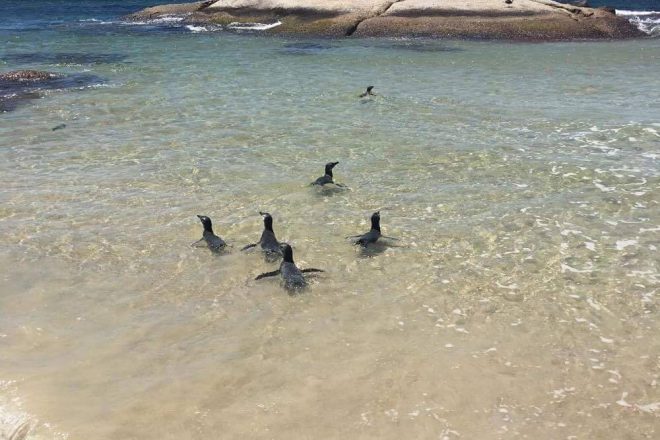
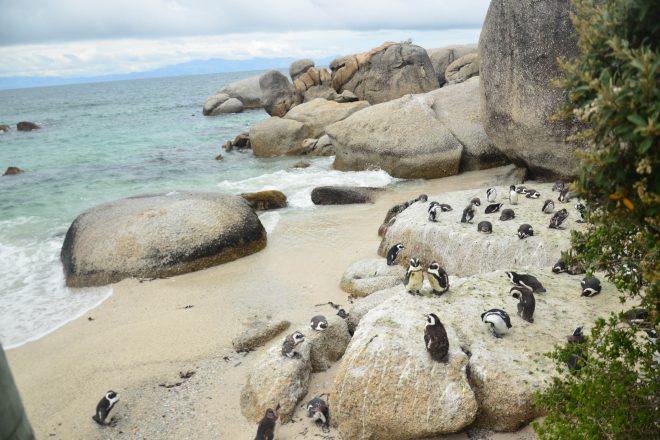
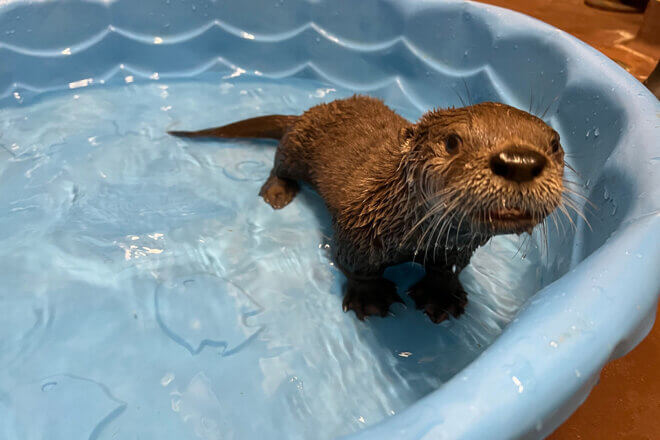
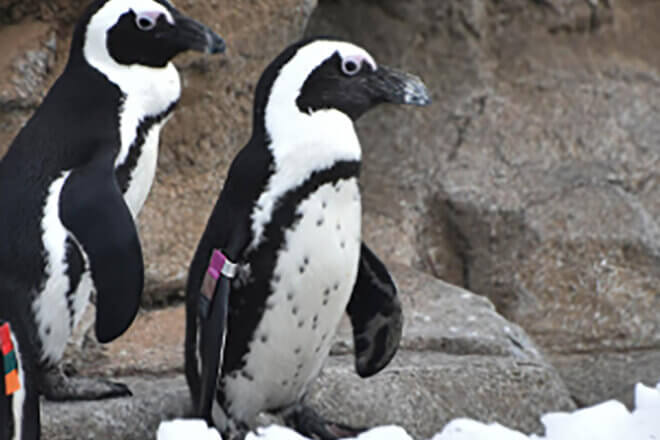
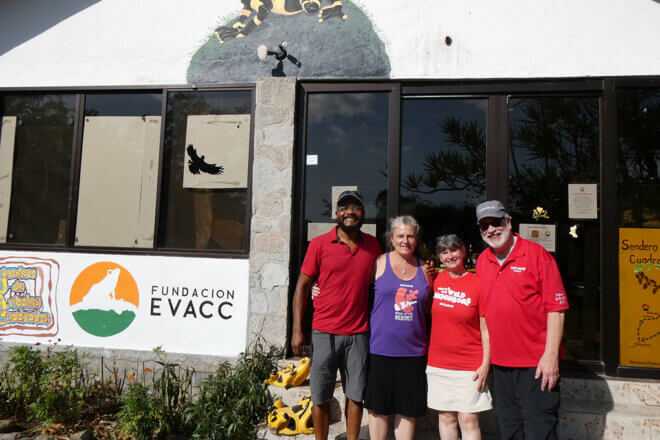

Share this article